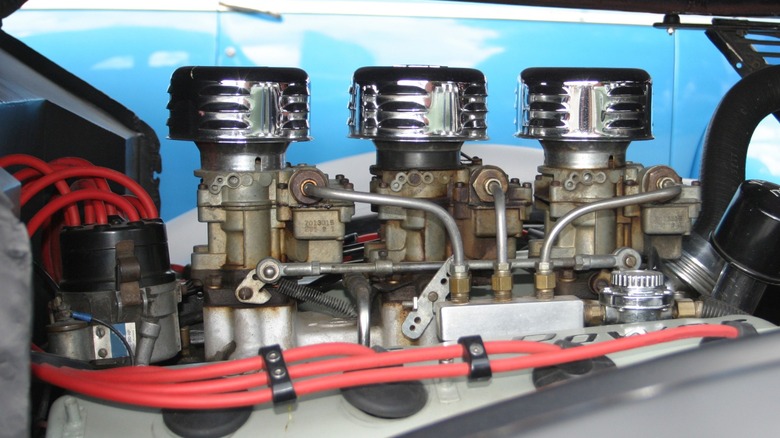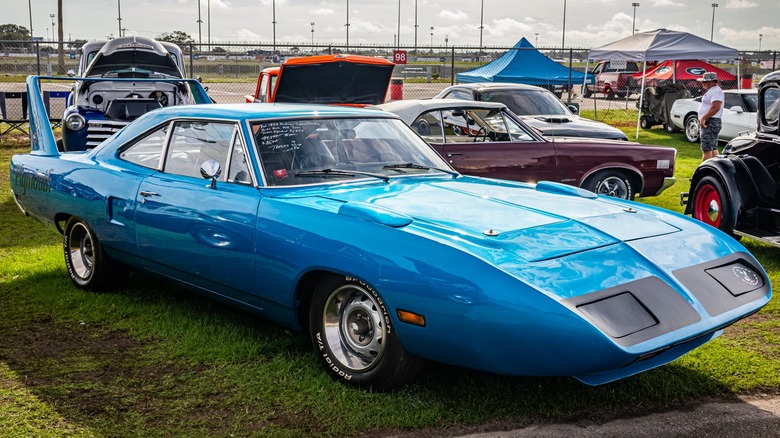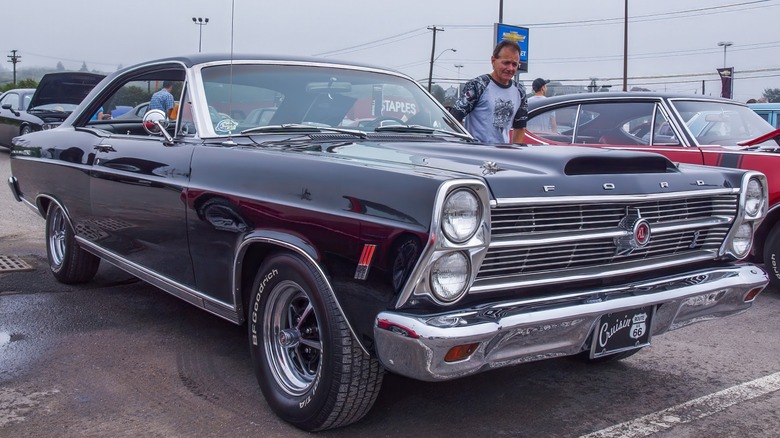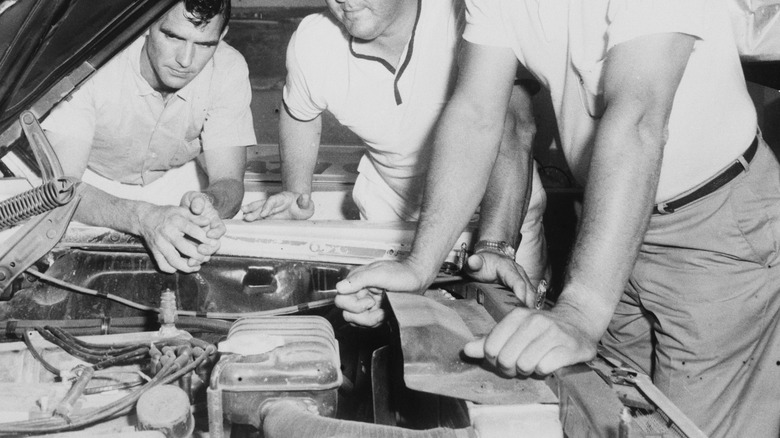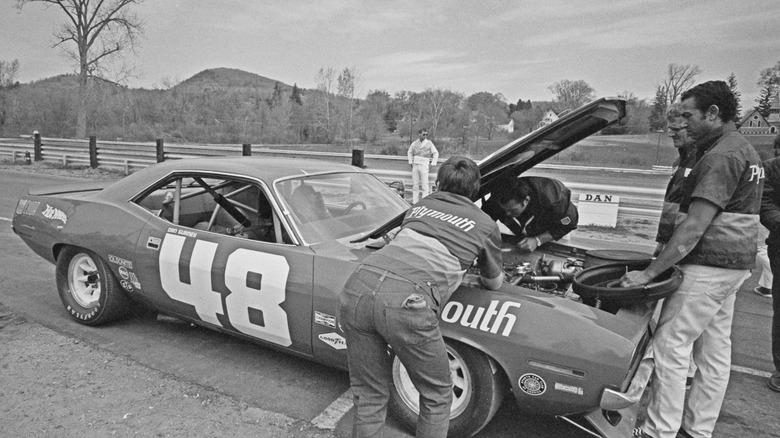Chrysler 426 Hemi Vs. Ford 427 SOHC: The Biggest Differences Explained
During the mid-1960s, many Americans were obsessed with automobiles. Teenagers cruised the main drag through countless small towns on warm summer evenings. Families loaded up in their cars to attend drive-in movie theaters. They often watched movies about automobile racing like "Viva Las Vegas" with Elvis Presley and Ann Margret or "The Great Race" with Jack Lemmon and Tony Curtis.
Auto racing was (and still is to some extent) a significant part of the American culture. Many Americans gathered around television sets and radios or attended races every weekend to cheer on their favorite NASCAR, Formula One, SCCA, and NHRA teams and drivers. America's automakers headed the mantra, "What wins on Sunday sells on Monday." That quest for sales fueled the research and development of some of our most iconic automobiles and the engines that powered them.
Chrysler's 426 Hemi was one of the most iconic racing-derived automobile engines emerging from the mid-1960s. Its domination drove NASCAR rule changes, forcing Chrysler to make the Hemi available in production vehicles. Ford had to develop a more powerful engine to keep up on the track and at dealerships. The result was Ford's 427 SOHC.
What makes the Chrysler 426 Hemi special?
Chrysler's 426 Hemi resulted from years of research and development, culminating in 1964, as a response to Ford's domination of the NASCAR circuit the previous year. Chrysler, along with Dodge and DeSoto, had developed Hemi technology a decade before the 426 Hemi came to fruition. However, manufacturing the hemispherical combustion chambered cylinder heads proved overly complex and expensive, so Chrysler abandoned it in favor of the 420-horsepower 413-cubic-inch big block Max Wedge engine.
The 1963 NASCAR season's failures signaled the end of the 413 Max Wedge engine's time in Chrysler's racing efforts, sending the company back to the lab. At first, engineers bored the 413 RB's cylinders from 4.1875 inches to 4.25 inches to create a 426 cubic-inch version of the Max Wedge, but that increase only gained five horsepower. Next, they replaced the wedge-design cylinder heads with a new evolution of Hemi cylinder heads, and the 426 Hemi was born.
The magic of the 426 Hemi engine lies in its dome-shaped combustion chamber, spark plug placement, and free-flowing design. The Hemi spark plug's location near the top center of the combustion chamber allows for even ignition of the compressed fuel and air mixture. In addition, the Hemi head's large intake and exhaust valves and corresponding ports allowed adequate fuel induction into the cylinders and rapid evacuation of the exhaust gasses after ignition.
The 426 Hemi is special among muscle car enthusiasts due to its inclusion in several Chrysler automobiles. Those offerings include legendary vehicles like the Dodge Charger Daytona and Plymouth Superbird and popular models like the Plymouth Barracuda, Dodge Challenger, and Dodge Dart.
The Ford 427 SOHC story
Much like Ford's domination of the 1963 NASCAR series led to Chrysler's creation of the 426 Hemi, the Hemi's 1964 Daytona 500 debut forced Ford to respond. However, when Ford submitted its 427 SOHC plans for NASCAR approval, it was denied due to its exotic nature and lack of production car availability, according to Motor Trend.
The 427 SOHC engine, affectionately known as the Cammer, used Ford's FE big-block platform, which dates back to 1958. While many run-of-the-mill Ford 427s used the standard Top-Oiler FE blocks, the 427 SOHC used a Side-Oiler FE block designed in 1965. From the engine's name, you might guess that the 427 SOHC is a significant departure from standard 427-cubic-inch Fords because of its camshaft arrangement.
Gasoline-powered racing big block engines often find their horsepower limited by RPM. Much of that limitation comes from efficient valvetrain operation related to multiple components, including lifters, pushrods, and rocker arms. The 427 SOHC design simplifies the valvetrain by placing the camshaft closer to the valves.
Ultimately, Ford turned to the drag racing community after NASCAR's ruling prohibited the 427 SOHC from being used on oval tracks. The high-revving big block succeeded on the quarter-mile drag strip, but the automaker moved on to other interests in 1966.
What are the biggest differences between the two?
The obvious differences between Chrysler's 426 Hemi and Ford's 427 SOHC big blocks are the Hemi cylinder heads' combustion chamber shape and the Ford's overhead camshaft arrangement. Their stories differ in that the 426 Hemi was developed over years of trial and error, while the 427 SOHC stormed onto the racing scene practically overnight by comparison.
Another big difference is their availability to the public. Ford never offered the 427 SOHC to the general public, although it possibly slipped into a few street cars for testing. Chrysler took the other option to keep its 426 Hemi on the NASCAR circuit. After sitting out the 1965 season, Chrysler stuffed the street version of its race-Hemi into almost every car it would fit.
Perhaps the most significant difference between the two is horsepower. While power ratings for the race-ready 427 SOHC are easy to find, the 426 Hemi's values are shrouded in mystery due to its production availability. Motor Trend reports 657 horsepower at 7,500 RPM and 575 lb-ft of torque at 4,200 RPM for a dual four-barrel carburetor equipped Ford 427 SOHC. The fairest comparison is likely the 426 Hemi dyno test reported by Hemmings in 2018. The dyno run results show the 425 horsepower rated Hemi producing 494.4 hp at 5,950 RPM and 498.3 lb-ft of torque at 4,500 RPM.
Methodology
While we'd love to get our hands on a Ford 427 SOHC Cammer and a NASCAR version of Chrysler's 426 Hemi, we had to rely on automotive industry expert's reporting for facts and figures. We also found historical accounts relating to the culture surrounding the automotive scene of the 1960s.
